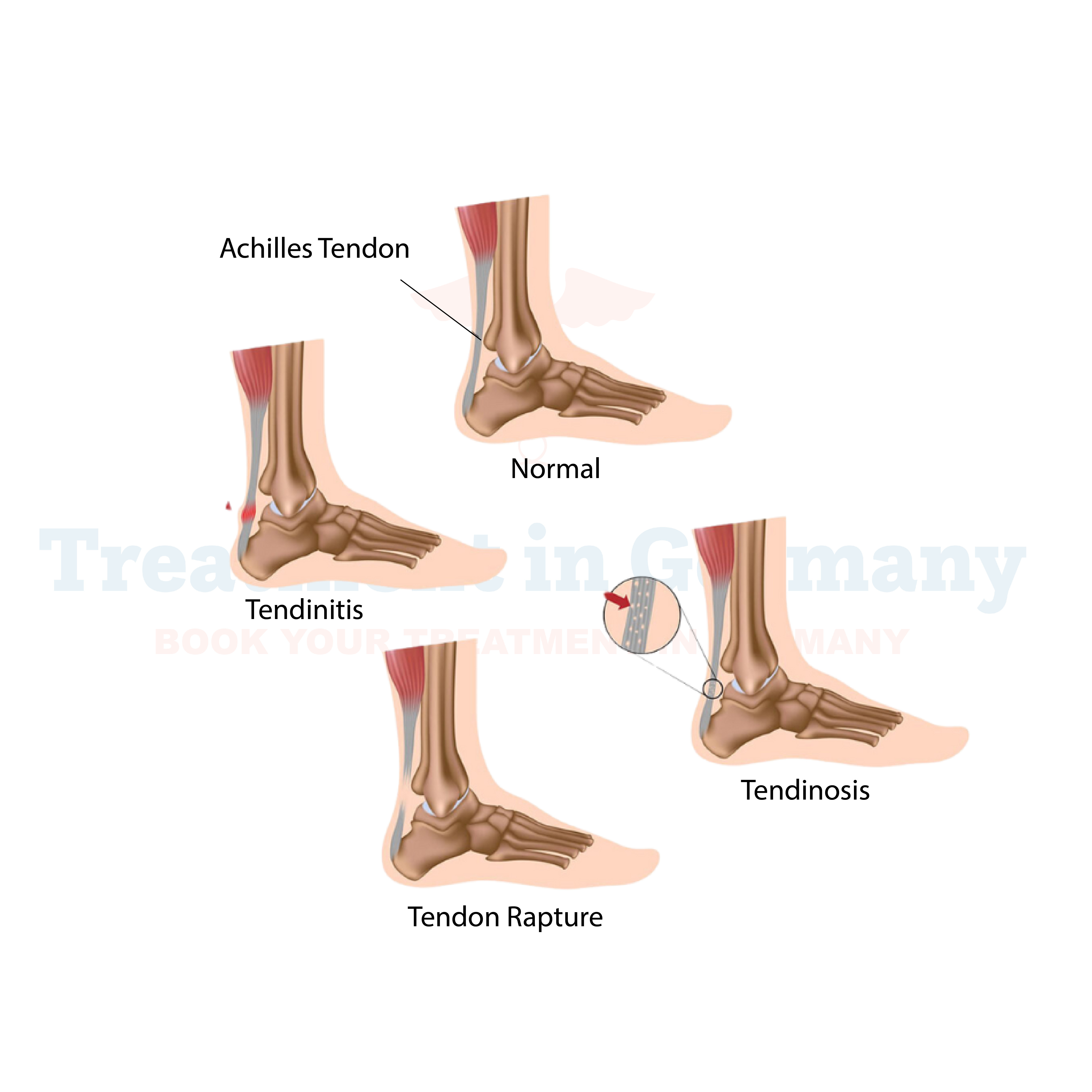What is Achilles Tendon Rupture:
Achilles tendon rupture is a common injury, particularly among athletes and active individuals. The Achilles tendon is a strong band of tissue that connects the calf muscles to the heel bone.
When this tendon is overstretched or torn, it results in a painful condition known as Achilles tendon rupture. This injury can occur suddenly during activities such as running, jumping, or pivoting, or it can develop gradually due to repetitive stress on the tendon.
Side effects of Achilles Tendon Rupture:
The primary symptoms of Achilles tendon rupture include a sudden sharp pain in the back of the ankle or calf, swelling, difficulty walking or rising on the toes, and sometimes a popping or snapping sensation at the time of injury.
If left untreated, Achilles tendon rupture can lead to chronic pain, weakness, instability, and decreased mobility in the affected leg.
How is Achilles Tendon Rupture diagnosed?:
Diagnosing Achilles tendon rupture typically involves a thorough physical examination by a healthcare professional, including assessment of symptoms, range of motion, and strength in the ankle and calf.
Imaging tests such as ultrasound or magnetic resonance imaging (MRI) may be ordered to confirm the diagnosis and evaluate the extent of the injury.
Potential treatments of Achilles Tendon Rupture:
In cases where the rupture is partial or the patient's overall health prohibits surgery, non-surgical treatment options may be considered.
This may include rest, ice, compression, and elevation (RICE), along with the use of a walking boot or brace to immobilize the ankle.
Physical therapy and rehabilitation exercises are often prescribed to gradually restore strength and flexibility to the Achilles tendon and surrounding muscles.
For complete Achilles tendon ruptures or for individuals who require a quicker recovery due to their lifestyle or occupation, surgical intervention may be recommended.
The most common surgical procedure for Achilles tendon repair is known as open surgery, where the surgeon makes an incision in the back of the ankle to access the torn tendon and reattach it to the heel bone.
Another approach is minimally invasive surgery, such as percutaneous Achilles tendon repair, which involves smaller incisions and specialized instruments to repair the tendon.
👉 Contact us for further information and receive a complimentary consultation.

.webp)
.webp)
 (1).webp)
 (1).webp)

.webp)
.webp)
 (1).webp)
 (1).webp)
